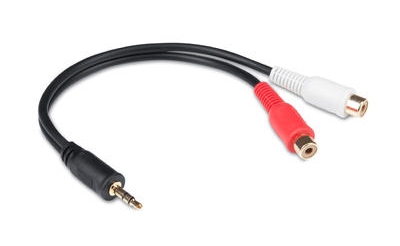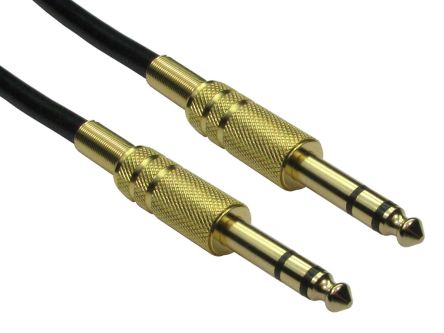In today’s tech-savvy world, the way we connect our devices has become increasingly important. Two prevalent types of audio connection interfaces, AUX and Lightning cables, serve distinct purposes and cater to different user needs. Understanding their differences, capabilities, and practical uses can help you make an informed decision on which one suits your lifestyle best. This article will delve into the nuances of AUX and Lightning cables, exploring their functionalities, advantages, and ideal use cases.
Understanding AUX Cables

AUX cables, short for auxiliary cables, are analog audio cables that have been around for decades. They are commonly used for connecting devices like smartphones, tablets, laptops, and other audio equipment to speakers, headphones, and car audio systems.
How AUX Cables Work
AUX cables typically feature a 3.5mm headphone jack on both ends, which allows for a direct analog audio signal transfer from one device to another. The simplicity of the design makes it universally compatible with a wide range of devices.
Advantages of AUX Cables

- Widespread Compatibility: Almost all audio devices come equipped with a 3.5mm headphone jack, making AUX cables universally compatible.
- No Power Required: AUX cables don’t require any power source, making them easy to use on the go.
- Cost-Effective: AUX cables are generally inexpensive compared to newer technology, making them accessible for all users.
- Quality Sound: For most casual listening experiences, AUX cables deliver high-quality sound without any lag.
Exploring Lightning Cables
Lightning cables, developed by Apple, are digital connectors that provide both power and data transfer capabilities. Introduced in 2012, Lightning cables have become the standard for many Apple devices, including iPhones, iPads, and iPods.
How Lightning Cables Work

Lightning cables feature an 8-pin connector, allowing for a reversible design that makes it easier to plug in. They transmit digital audio signals, which can provide higher sound quality and additional features compared to AUX connections.
Advantages of Lightning Cables
- Superior Sound Quality: Lightning cables can deliver higher fidelity audio due to their digital signal transmission.
- Power and Data Transfer: In addition to audio, Lightning cables can charge devices and transfer data, making them versatile.
- Advanced Features: Lightning connections can support advanced features such as Siri voice control and inline remote functionalities.
- Compact Design: The small and reversible design allows for easier handling and storage.
Comparative Analysis: AUX vs. Lightning Cables
When deciding between AUX and Lightning cables, several factors come into play. Here is a comparative analysis based on key aspects:
Sound Quality
AUX cables offer solid sound quality for everyday use. However, Lightning cables, transmitting digital audio, often provide clearer and more detailed sound, especially when paired with high-quality headphones or speakers.
Device Compatibility
AUX cables win in terms of compatibility. They work with virtually any audio device, while Lightning cables are specific to Apple products. If you own an Android device or standard audio equipment, AUX is likely the better choice.
Cost Implications
AUX cables are typically much cheaper than Lightning cables. For users on a budget, the cost-effectiveness of AUX cables makes them a practical option for connecting devices.
Versatility

Lightning cables are more versatile as they can charge devices in addition to providing audio. If you are looking for a multi-functional cable, Lightning is the way to go. AUX cables, while excellent for audio, do not offer any additional features.
Use Cases for AUX Cables
There are various scenarios in which AUX cables shine:
- Car Audio Systems: Many older cars are equipped with AUX input, making it easy to connect smartphones for music streaming.
- Home Audio Setup: AUX cables can easily connect portable speakers or headphones to home systems without any fuss.
- Budget-Friendly Listening: For users who do not want to invest heavily in tech, AUX cables provide a simple and cost-effective solution.
Use Cases for Lightning Cables
Lightning cables excel in the following areas:
- High-Quality Audio Experience: For audiophiles using premium headphones or speakers, Lightning cables can significantly enhance the listening experience.
- Charging and Data Transfer: Lightning is essential for Apple users needing to charge their devices or transfer data quickly.
- Use with Advanced Accessories: Many high-end headphones and audio interfaces are designed to work specifically with Lightning connectors, offering additional features.
Case Studies: User Experiences
To provide a clearer picture of how each cable performs in real-world scenarios, let’s look at a couple of case studies.
Case Study 1: The Casual Listener

Jane, an occasional music listener who primarily uses her Android phone and Bluetooth speakers, found AUX cables to be the perfect fit. She appreciates the simplicity and affordability of the AUX cable, allowing her to connect her phone to various devices without hassle.
Case Study 2: The Audiophile

On the other hand, Mark, an Apple user and a music enthusiast, invested in high-end Lightning headphones. The enhanced sound quality and additional features provided by the Lightning cable allowed him to enjoy a superior listening experience, making it worth the investment.
When deciding between AUX and Lightning cables, the choice ultimately depends on your specific needs and device compatibility. AUX cables are ideal for those seeking a budget-friendly, universally compatible option for audio connections. On the other hand, Lightning cables cater to Apple users who prioritize sound quality and versatility in their connections.
In summary, both AUX and Lightning cables have their merits. Understanding your listening habits, device compatibility, and budget will guide you to the right choice. Whether you opt for the classic AUX or the modern Lightning, each cable offers a unique way to enhance your audio experience.


